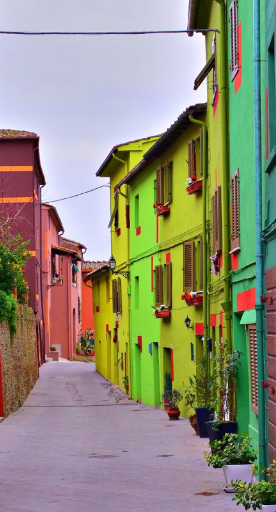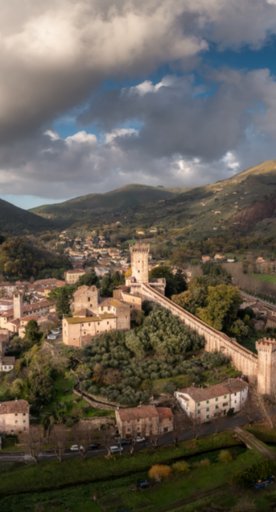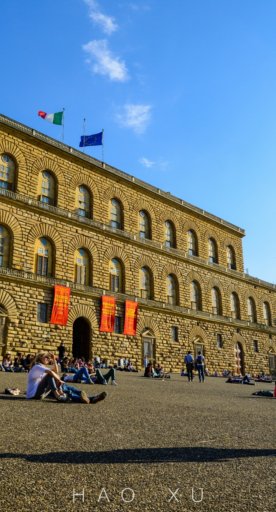First time in Florence: what to see
A little guide to what you should not miss when you visit Florence for the first time
There's always, or almost always, a first time for everything in life, and in all likelihood there will be a first time to visit Florence. When that time comes, there will be so many things you will want to do and see: after all, the city has so much to offer. In this article we offer you a little guide to help you discover Florence: the piazzas and monuments to explore, the museums to see and the delicacies to savour.
-
1.The heart of Florence: your journey begins in Piazza del Duomo
-
2.Governing the city: Piazza della Signoria
-
3.Piazzale Michelangelo and the Florentine panorama
-
4.The Uffizi Galleries and the main museums of Florence
-
5.Florence's historic cafés and street food venues
The heart of Florence: your journey begins in Piazza del Duomo
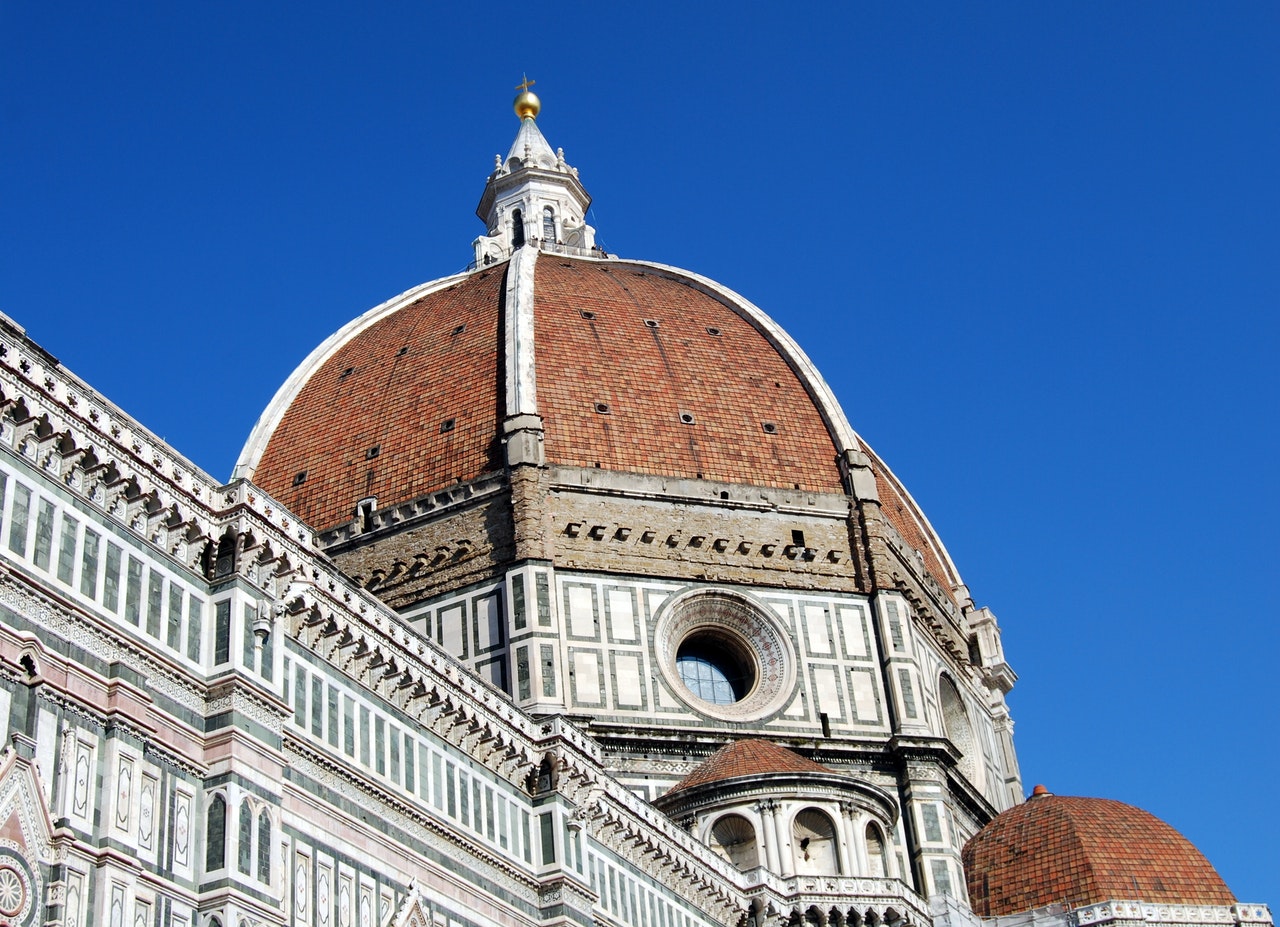
We start in Florence's most famous square. You'll feel a lot of things upon first setting foot in Piazza del Duomo, just by looking, from any angle, at Brunelleschi's Dome, a majestic, awe-inspiring view like no other in the world. At the time of its construction it was the biggest on earth, and even today, nearly 600 years later (it was completed in 1436), it remains the largest dome ever made out of brick.
But the cathedral and its dome are not the only things of beauty that you will find in this extraordinary square, for just opposite its steps you will see the Baptistery of San Giovanni. A little jewel of architecture, over the centuries it has seen the christening of knights and poets aplenty. Its origins are shrouded in mystery: it was once thought to have been built on the ruins of an ancient temple of the god Mars, but this theory was abandoned as more archaeological remains were unearthed over the nineteenth century.
Also in Piazza del Duomo stands Giotto's bell-tower. At almost 85 metres high and 15 metres wide, it is living testimony to the Florentine gothic architecture of the fourteenth century; stand near its base and you will be amazed by the white, red and green marble in which it is clad. As its name suggests, it was begun in 1334 by Giotto, and upon his death was continued under the supervision of Andrea Pisano.
The Baptistery, Giotto's bell-tower and Brunelleschi's dome can all be visited. Booking is required for Brunelleschi's Dome: you specify a time when you buy the ticket.
Governing the city: Piazza della Signoria
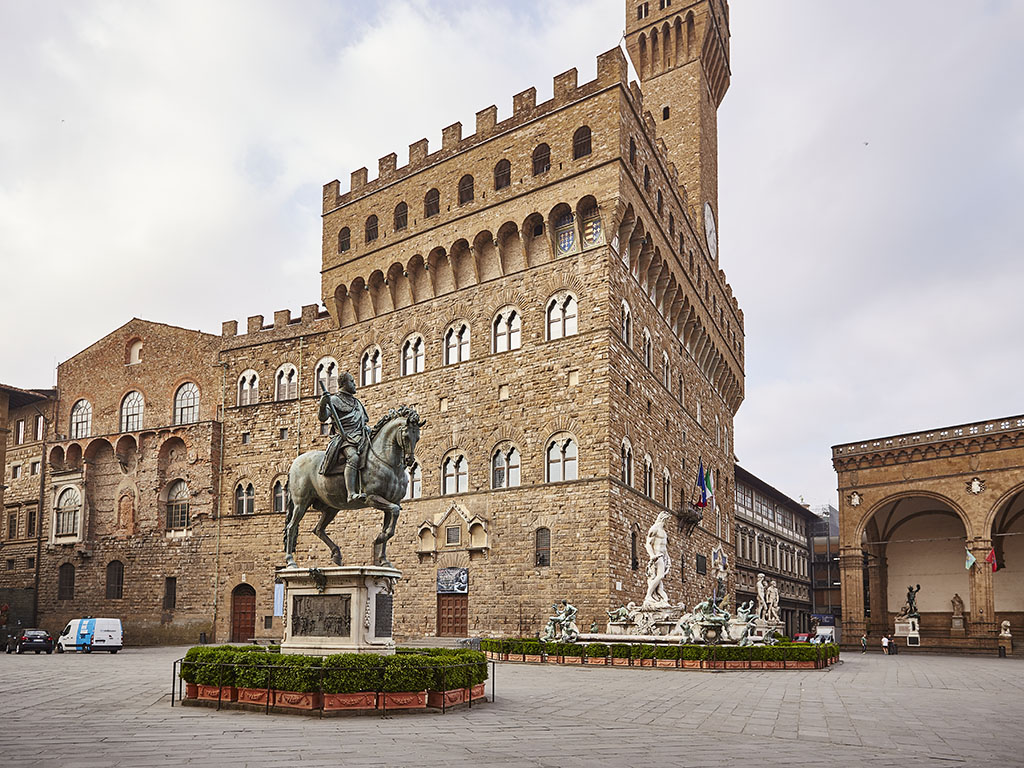
This piazza has always represented the political heart of Florence. As soon as you arrive, you will notice its unusual L-shape, a configuration that dates back to the second half of the thirteenth century, when the Guelf party, having regained control of the city, decided to raze to the ground the 36 buildings in the square that belonged to their Ghibelline rivals. Hence its peculiar shape.
In Piazza della Signoria you will see the Palazzo Vecchio, the Loggia dei Lanzi and Neptune's Fountain. The first of these has served as the city hall for centuries: indeed between 1865 and 1871 it was the Parliament building of the newborn Kingdom of Italy. The palazzo has not always borne its current name, but has variously been known as the Palazzo dei Priori, Palazzo della Signoria and the Palazzo Ducale, before being definitively named the Palazzo Vecchio in 1565, when Duke Cosimo I moved his court to the Palazzo Pitti. A great many artists have worked on its interiors over the centuries, embellishing it with precious works of art: Bronzino, Ghirlandaio, Giorgio Vasari, Michelangelo, Donatello and Verrocchio, to name just a few. Having undergone extensive restructuring, it today functions as Florence's town hall.
Opposite the Palazzo Vecchio we find the Loggia dei Lanzi, a true outdoor museum, where you can admire masterpieces like Benvenuto Cellini's Perseus and Giambologna's Rape of the Sabine Women.
Staying in the piazza, it is impossible not to be enchanted by Neptune's Fountain, designed by Bartolomeo Ammannati and inaugurated in 1565 to mark the wedding between Francesco I de' Medici and Grand Duchess Joanna of Austria. Inside the Palazzo Vecchio you can still read a plague, dated 1720, that gives the rules for using the fountain. It is forbidden, it reads, "to dirty the fountain in any way, to wash inkpots, clothes or anything else in it, or to dispose of timber or other waste." A little insight into the customs of times past.
A few steps from the Piazza della Signoria, you should walk across the Ponte Vecchio, one of the symbols of the city and the oldest of the bridges that span the River Arno. Its first incarnation was probably erected during the Roman period, but it was rebuilt in 1345 by either Taddeo Gaddi or Neri di Fioravante. Ever since 1593 the bridge has been home to the city's jewellers and goldsmiths, which makes the Ponte Vecchio the perfect venue for a day of shopping.
Piazzale Michelangelo and the Florentine panorama
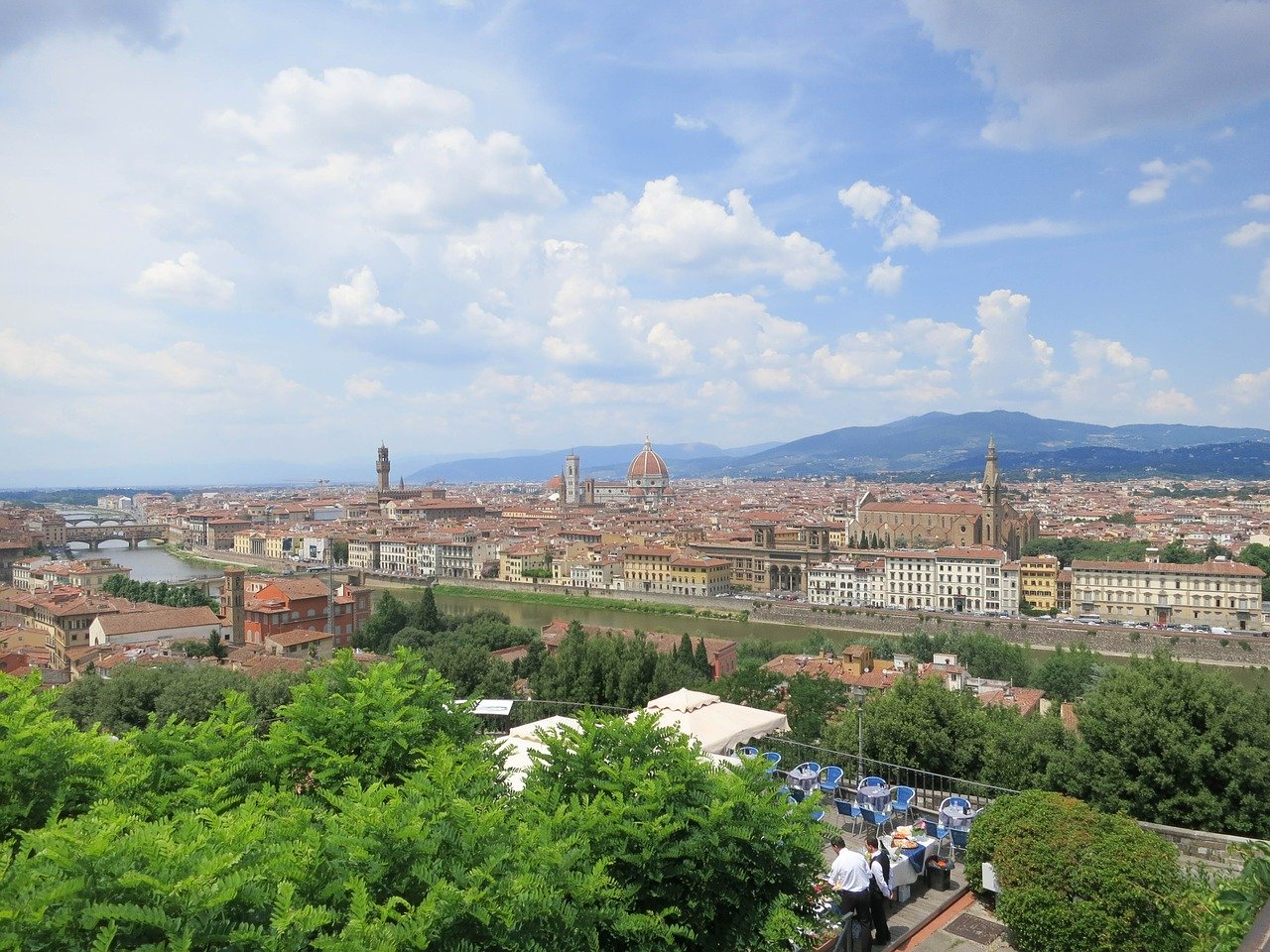
If there is one place from where you can see Florence in all its glory, it would be Piazzale Michelangelo, which offers a stunning view over the whole city. Once you're in the piazzale, which stands halfway up a hill slightly to the south of the historic centre, you find a bronze copy of Michelangelo's monumental David. Piazzale Michelangelo, as we see it today, was designed in 1869 by the architect Giuseppe Poggi, who wanted to pay tribute to the great Renaissance artist by filling the square with bronze replicas of his other works. Initially, this was going to include a loggia that would have been home to a Michelangelo museum; this was never realised, and today a restaurant stands in its place. Piazzale can easily be reached by public transport or, for those who fancy a bit of climb, by foot.
The Uffizi Galleries and the main museums of Florence
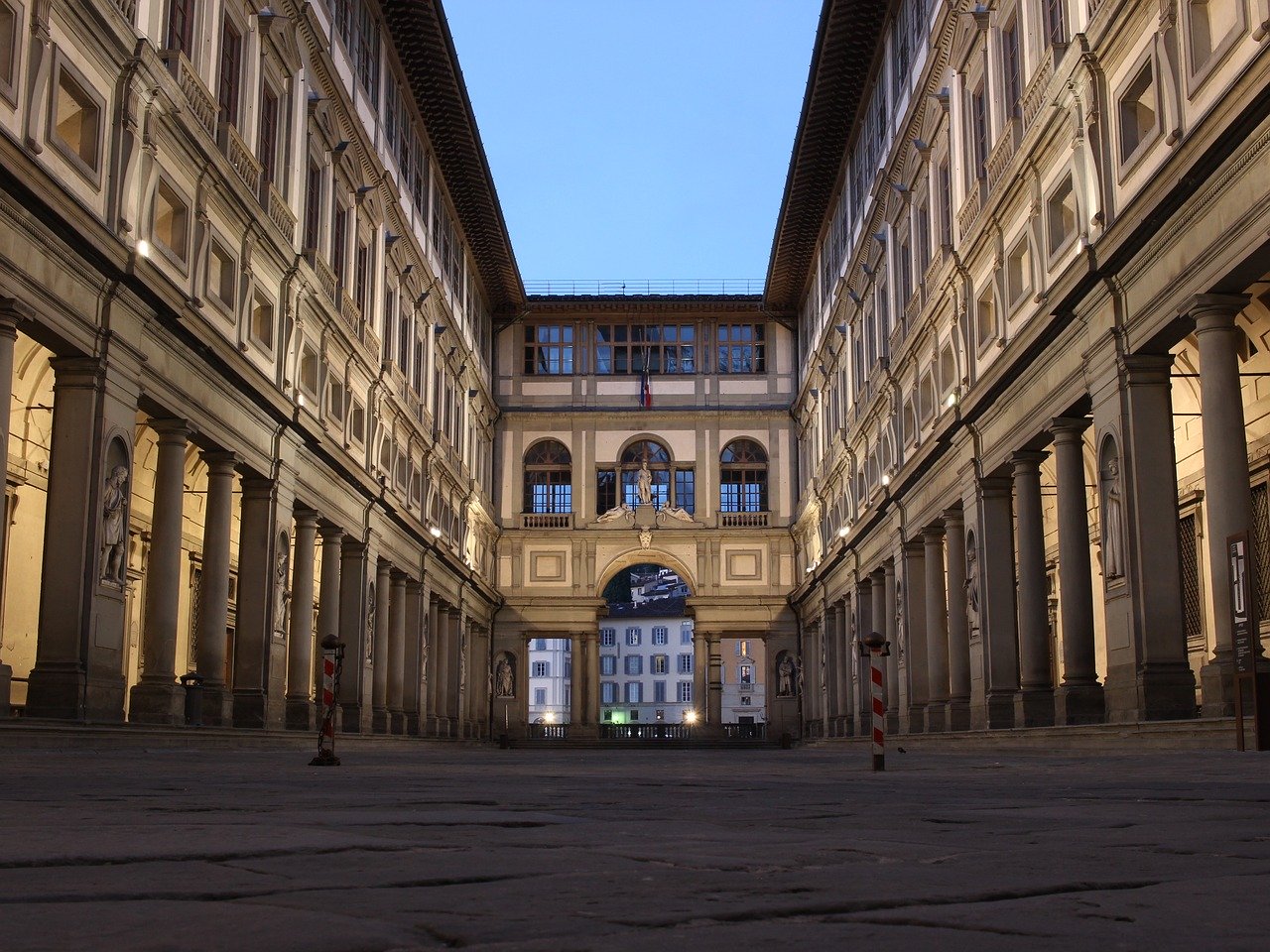
Next to Piazza della Signoria we find Florence's most famous museum complex, known across the globe: the Uffizi Galleries. The museum occupies the palazzo built by Giorgio Vasari in 1560 on the orders of Cosimo I de' Medici, and gives visitors the chance to see collections spanning the history of western art: from the fourteenth century and the Italian Renaissance to the masters of the German, Flemish, Dutch and French schools. Visitors will find works by Giotto, Simone Martini, Piero della Francesca, Beato Angelico, Filippo Lippi, Botticelli, Mantegna, Correggio, Leonardo, Raffaello, Michelangelo and Caravaggio. A concentration of art like few others in the world.
Another obligatory stop on any first visit to Florence is the Medici Chapels. Initially designed to celebrate the Medici house, they later became, at least in part, the family crypt, the place where the Medici were buried until the end of the dynasty in 1737. The Medici Chapels Museum includes the New Sacristy, the sculptures in which were designed by Michelangelo; the Chapel of Princes and the Crypt, where the Medici Grand Dukes and their relatives are buried. You can also visit the funereal monument to Cosimo the Elder, and another crypt belonging to the Habsburg-Lorraine family.
Another place to see the great wealth of art with which the Medici family left Florence is the Bargello Museum, where you can admire one of the largest and most important collections of Renaissance statuary in the world. It includes masterpieces from Michelangelo, Donatello, Ghiberti, Cellini and Giambologna, to name a few.
Florence's historic cafés and street food venues
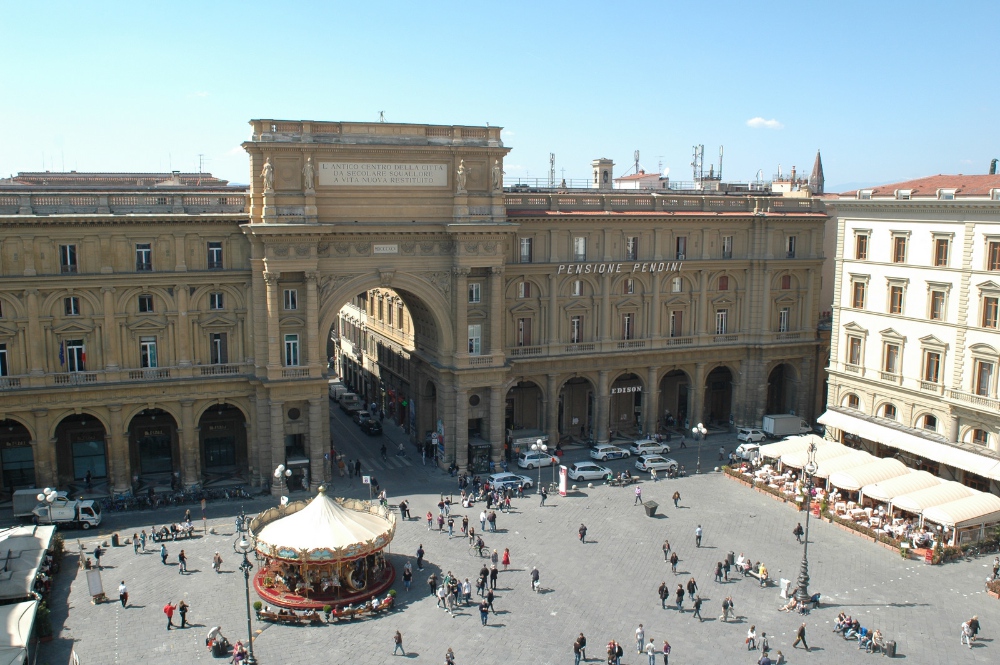
Going to Florence also means immersing yourself in its food culture and discovering the historic gathering places which have full claim to a part of the city's history. Lovers of street food should not miss the covered Mercato Centrale in the San Lorenzo district, where you can try a huge variety of local delicacies, from typical Florentine and Tuscan dishes like lampredotto and stracotto, to traditional meats and charcuterie. Nor should you miss out on the fried fish platters or the truffles; and stop at an enoteca to choose a wine to drink in-house or to take home.
Finally, it is worth visiting some of the bars that have carved out a place in Florence's history and the cultural movements they witnessed over the course of the nineteenth and twentieth centuries. Among these is Giubbe Rosse, a bar that opened in 1897 and which in the early 1900s became a favoured meeting spot among artists and writers, especially those belonging to the Futurist movement. Caffè Concerto Paszkowski, which was so christened in 1904 when it became the property of the Polish Paszkowski family, also deserves a mention. In the early twentieth century, it seated the writers and artists who gave life to journals and magazines of the time like La Voce, Lacerba and Il Selvaggio.
The last stop on our trip is dedicated to ice-cream lovers, who should not miss out on a visit to gelateria Vivoli, founded by Serafino Vivoli in 1929. Almost a hundred years later, one of Florence's oldest gelaterias work as they always have done, and now they have a bakery attached, which welcomes you with a sweet sugary embrace.
Visiting Florence for the first time, then, is like deciding to read a good book. What we have suggested in this article is just the first chapter, introducing the main characters and settings. It does not finish here. The journey continues through Florence's most distinctive markets and most alternative, underground bars.














